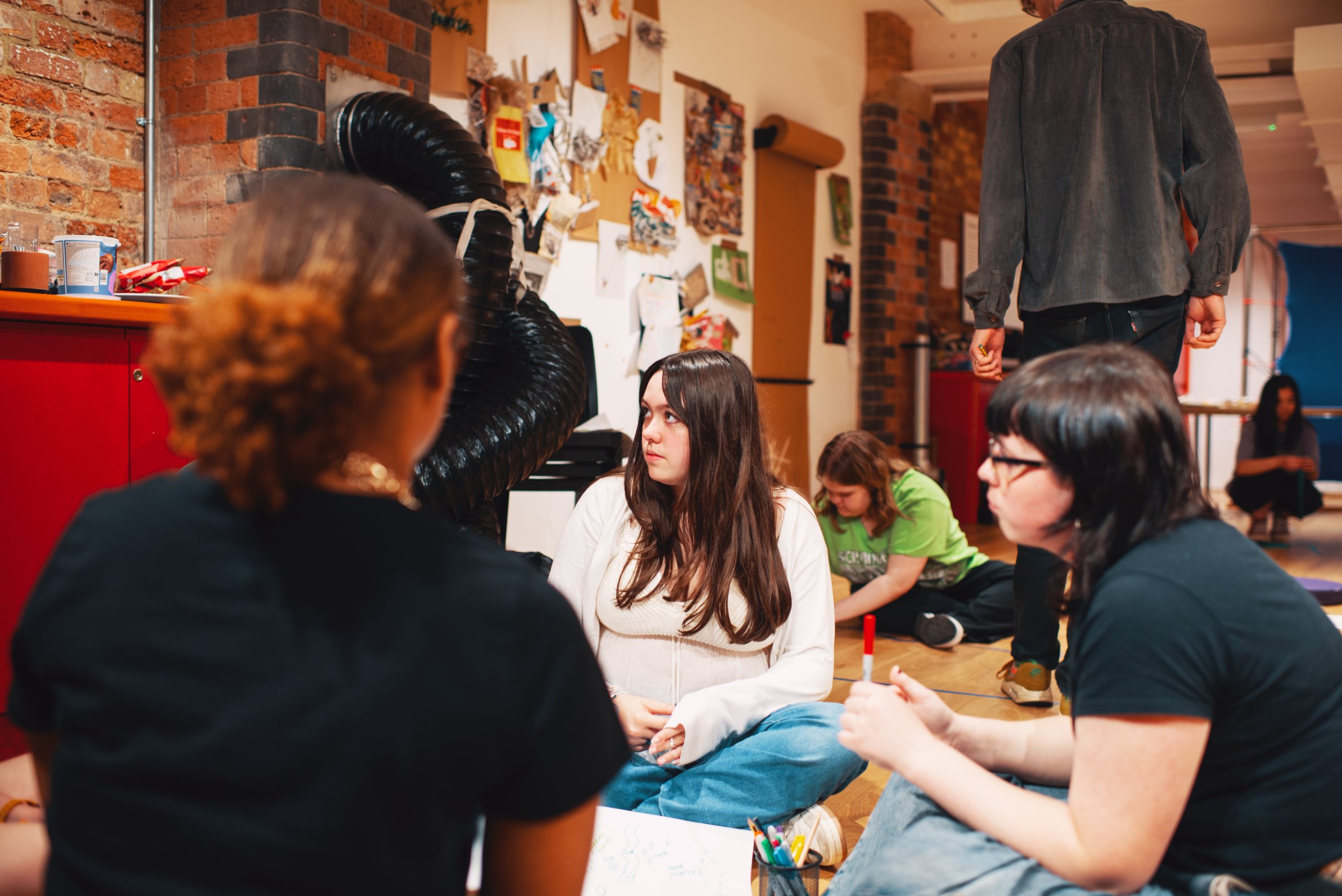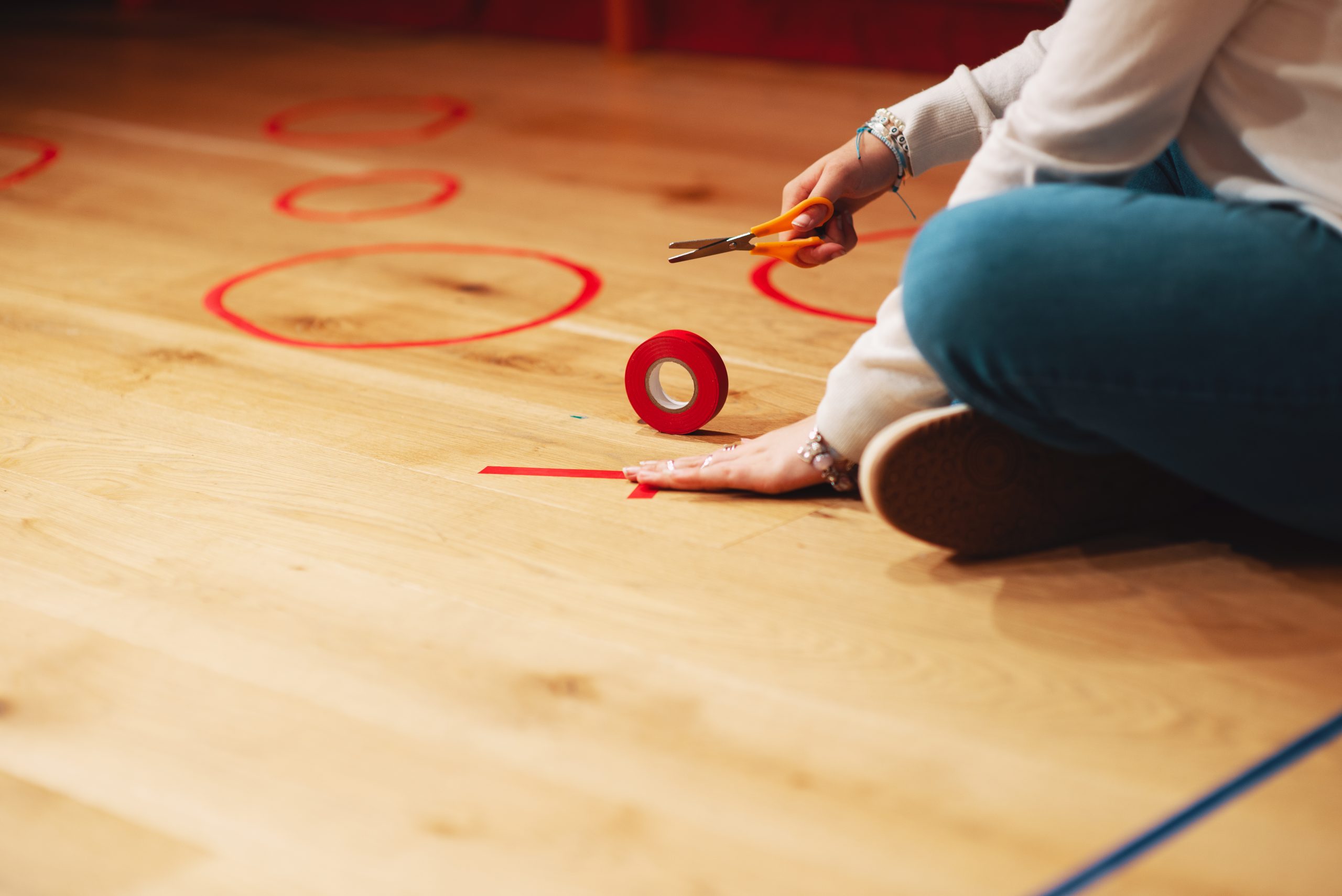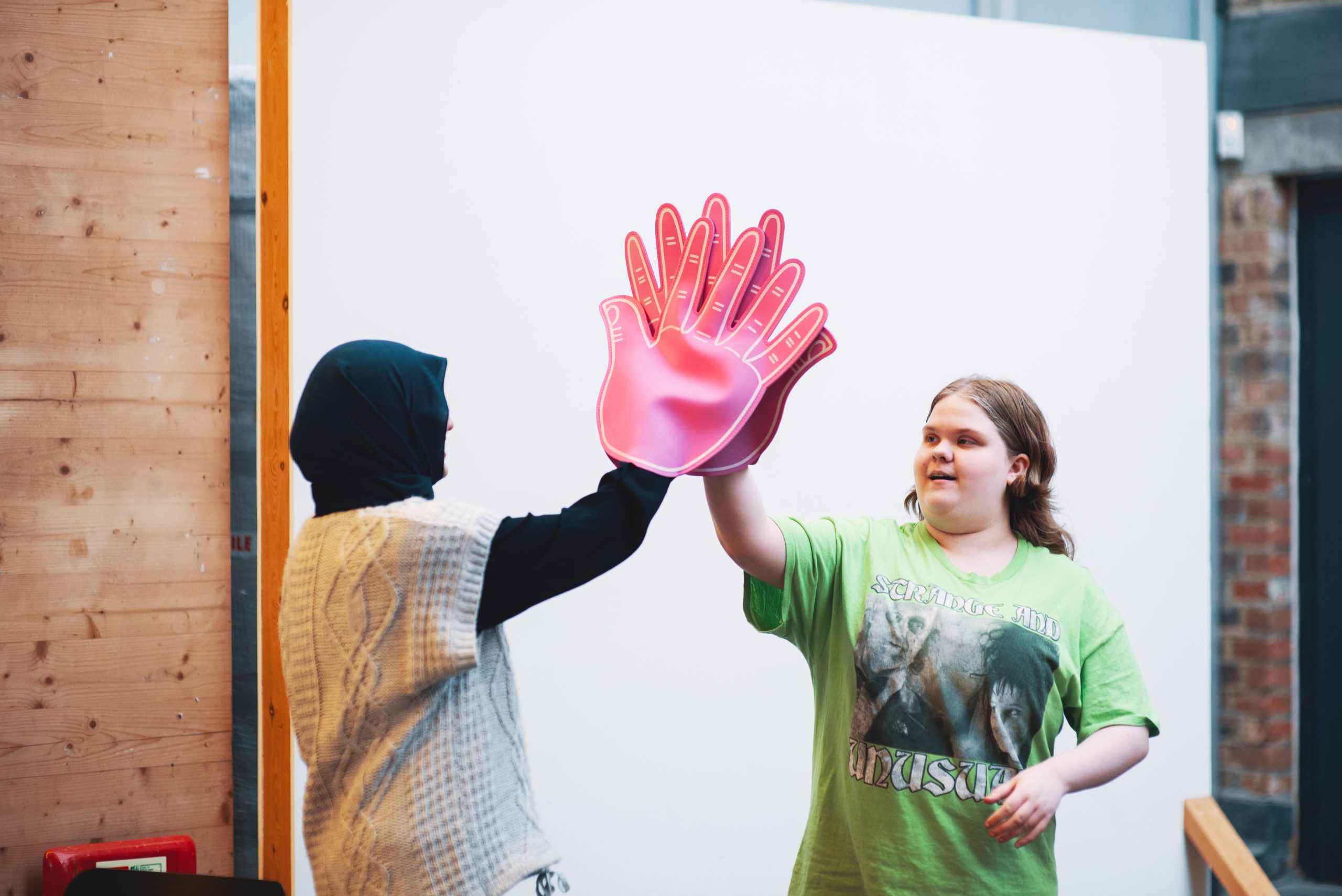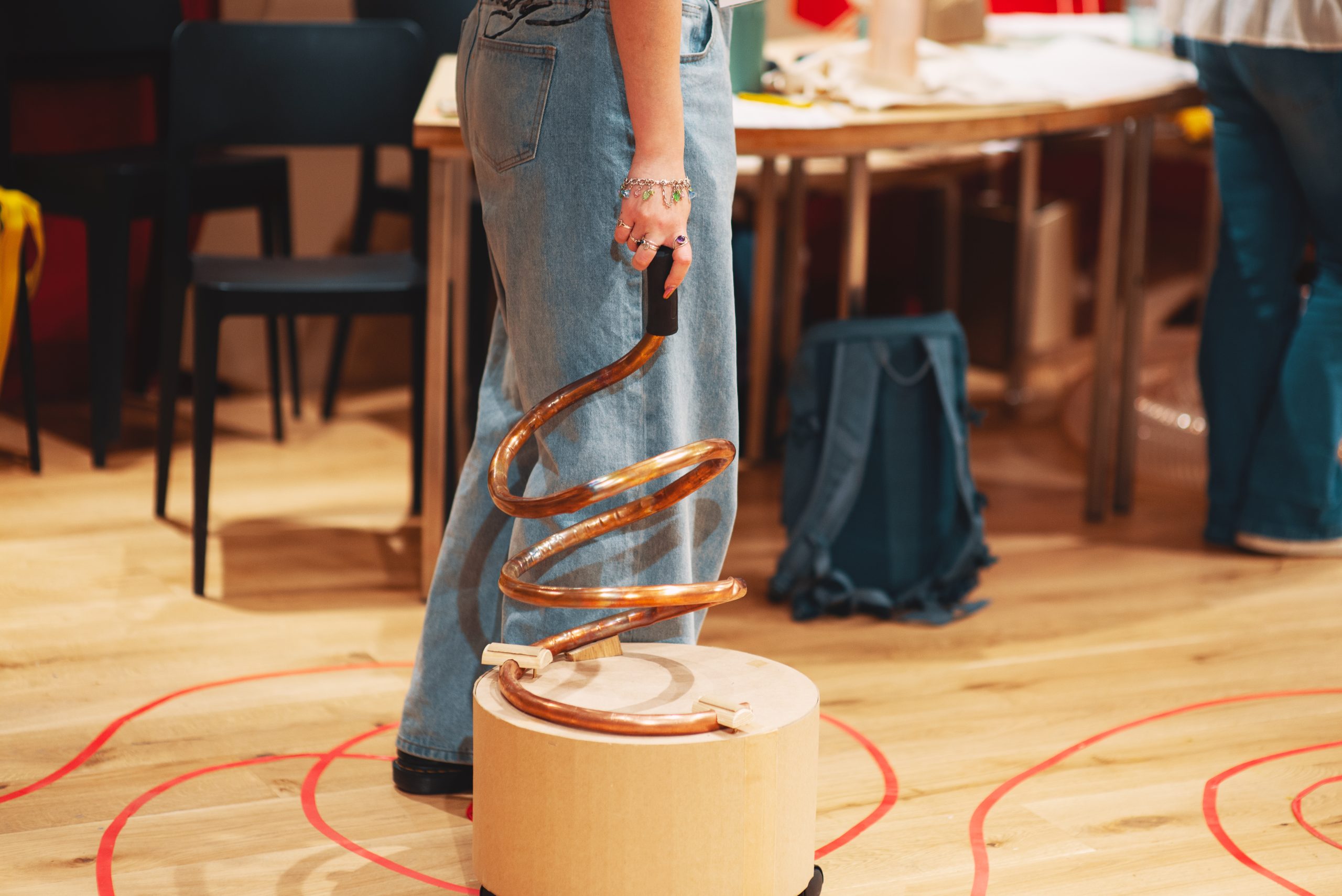Meet the artists: Leap Then Look
Founded by artists Lucy Cran and Bill Leslie in 2019, Leap Then Look create interactive art works, participatory projects, workshops and events.
How do you work as a duo?
Working together has allowed us to bring together our different and corresponding artistic concerns. Lucy in sculpture and performance, Bill in sculpture and film. We have a long history of working together initially studying theatre and creating experimental and collaborative performance in our 20s. The collaborative nature of improvised theatre is foundational to our work now. It’s about gathering together materials (conceptual, physical, emotional) in a particular space and seeing what emerges. I think this history has meant that collaboration feels natural to us and this has flowed over into our work with other people. The desire is to share our ideas, skills and experience and to see what can emerge. It’s a process that feels both generous and generative. We want our artworks to generate engagement, to create the conditions for new art to emerge.

Tell us more about the Intensives you delivered with young people in the development of your new commission.
These were a really busy and fun 4 days. It gave us the chance to explore some new ideas with other people – like cutting up clothes to see how sleeves, hoods and trouser legs could be built into wearable sculptures to prompt movement. Exploring different forms and what they might elicit in terms of movement or framing everyday movements for us to see them back in the context of art making. Working with the group allowed us to think about what motivates teenagers to act physically; not only what sorts of sculptural form might initiate or encourage movement but to think about what conditions young people might need to feel they could play.
It helped us to think about what play looks and feels like for teenagers. How could the group feel relaxed and supported enough to mess around physically together. Make up games, be silly and make each other laugh.
We also invited in a dancer (Becky Horne) who taught us simple movements and warm ups inspired by Yvonne Rainer which felt like group learning activities we could also take part in alongside the young people.
We thought about our physical relationship to space and architecture through practical activities based on the work of Vallie Export and Yvonne Rainer, and the relationship of movement and recording vocal sounds to accompany movement sequences which will be played back in the installation.
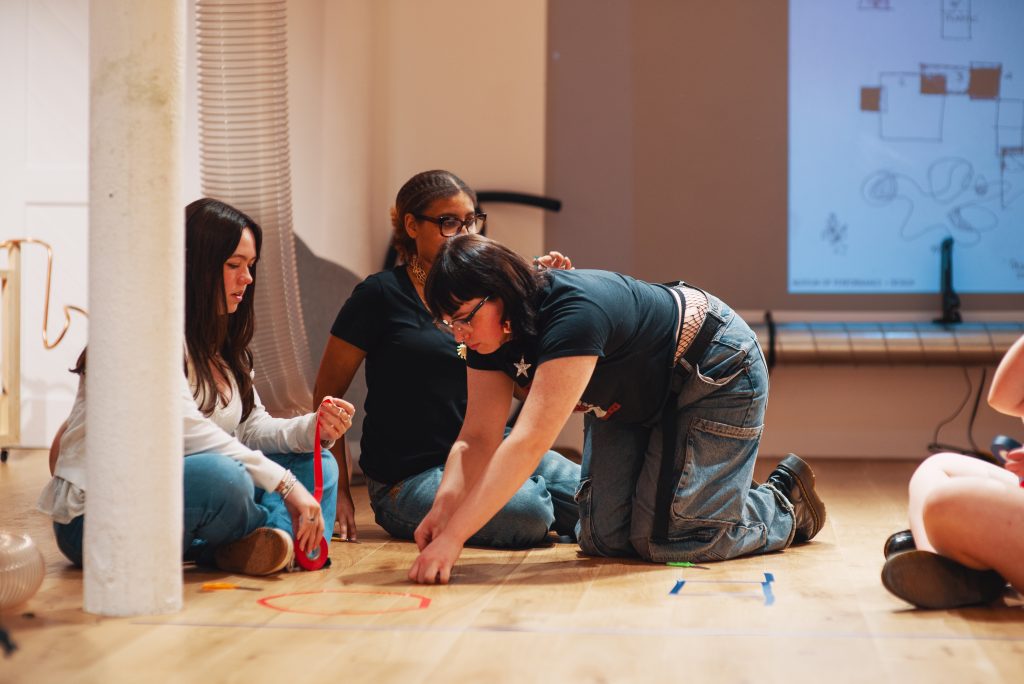
How have you explored playfulness, inquisitiveness and experimentation in relation to movement in your new installation?
By making a space with lots of invitations to touch and move and pick things up we hope that audiences will find themselves interacting physically with the show. This could be as simple as walking around and feeling free to brush your fingers over surfaces to feel the materials, it could be lying or sitting on the structures, picking up and putting things on, or it could be observing others and the way their bodies and intentions shape and change the possibilities of the space.
We do not want to dictate the ways in which the space should be used or interacted with, nor the speed or pace of these interactions. This is what people bring with them and we want them to feel free to explore. What we hope might emerge from this are new physical understandings of the relationship between bodies, objects and spaces and what might be possible in a gallery.

The installation combines artworks of different weights, textures, shapes, and sizes, that are able to be touched, worn, connected and moved. Why did you choose these materials, colours, and shapes to work with?
The show will combine a set of sculptures made from loops and bends of metal tubing which can be picked up and fitted to the body, padded fabric sculptures with sleeves and holes for arms and legs, a steel structure with fabric panels for arms and legs and lots of fabric tubes that can be linked together and woven around the space as well as sculptures on wheels that can be rolled around the space. Each element invites a different sort of engagement and we hope will encourage people to be physical in the space in different ways whether picking up and wearing sculptures, moving things around to change the space, posting and attaching tubes.
We’re hoping that, whoever you are, you will be moved and will move within the space in ways you might not normally expect in a gallery. That this activity will be contagious as people show each other the ways the space can be used through their own activity and collectively set rhythms and atmospheres in the space, a shared experience of interpretation or re-making.
We chose to work with clothes as a nod to a work by Trisha Brown, Floor of the Forest, which sees dancers moving across a steel frame by putting on and taking off clothing hanging in it. This work, along with those by contemporaries like Yvonne Rainer and Simon Forti, radically rethought dance through exploratory movement, such as tasked-based movement, repositioning the body as a tool for it’s own exploration. This was a time historically that we return to, many of these practices were also challenging divides between audience and performer, bringing dance out of the theatre to share spaces with other practices, art, music. The ways these dancers were working with objects, and environments, not as set and costume in support of any narrative, but for their material affordances, to be useful for bodily exploration. The dance constructions Simon Forti used for example were made by Robert Morris, leading on to his 1970 interactive Tate exhibition.
We have chosen to work with forms we hope will invite open ended exploration, mirrors, to frame and show back movement from parts of the body, clothes to make a connection with everyday movement, forms from the series of VALIE EXPORT photographs are recreated as invitations. We have used lots of foam, fabric, and upholstery to invite close bodily contact and have tried to develop a colour palette that hopefully signals all ages are invited to play.

